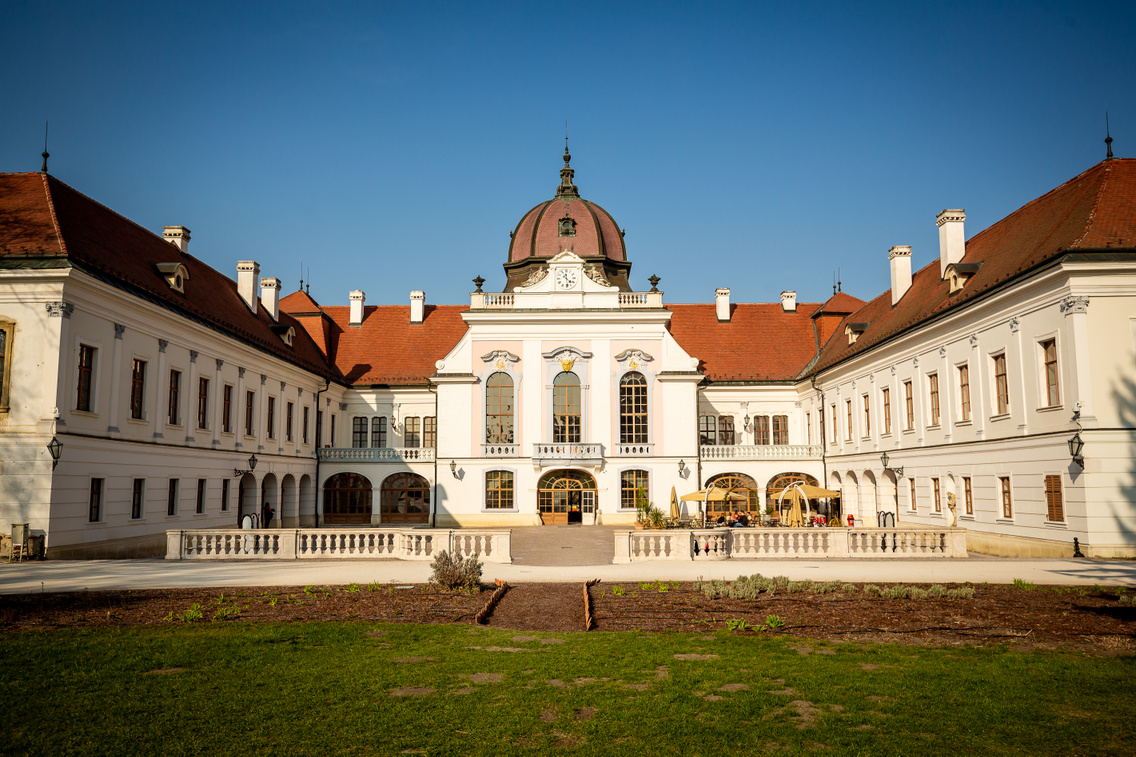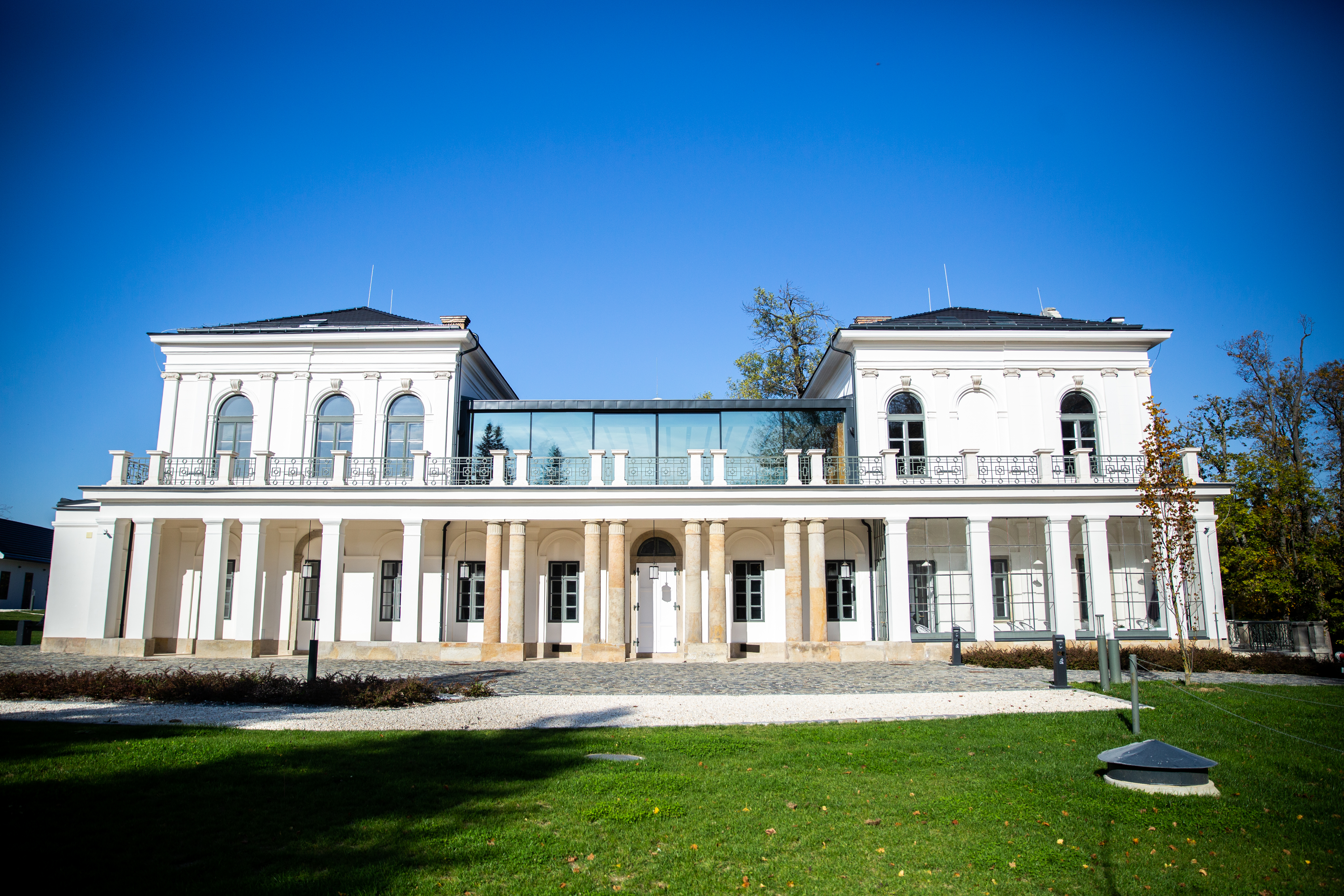The English Neo-Gothic appearance was acquired in the 1870s, when the inheritance passed to Géza Brunszvik, but by the end of the century the family was in a difficult financial situation, so the four-generation estate was first owned by the Habsburgs and then by brewing magnate Antal Dreher. Today you can visit three fascinating museums, dine at a decent restaurant and take a refreshing recreational stroll in the grounds. There are also regular festivals themed around Beethoven, including a whole day’s events from 10.30am on Saturday, 18 December. For more details, see here. 2462 Martonvásár, Brunszvik utca 2. Frequent train from Budapest Déli/Kelenföld to Martonvásár (journey time 30mins). The castle is alongside Martonvásár station.
In the tumultuous year of 1867, when Hungary gained semi-autonomy from Vienna, the Hungarian State bought the palace and offered it as a gift to Franz Joseph and Sissi. The queen had had a pivotal role in the negotiations to persuade her husband to grant Hungary semi-independence, a move that then led to Budapest becoming the grandiose capital we know today. Sissi, meanwhile, would retreat here from the pressures of courtly life in Vienna, riding around the sumptuous grounds on horseback. The closest Hungary gets to having its own Versailles, the palace was occupied between the wars by Regent Miklós Horthy and was superbly restored after decades of Communist neglect. Worth visiting year-round, a short walk from the HÉV station (which still contains the royal waiting room created for the Habsburg couple), Gödöllő is also laying on special events over the Christmas season – classical music concerts, puppet shows and family-friendly performances. 2100 Gödöllő. HÉV train every 30mins from Örs vezér tere to Gödöllő (journey time 45mins).
The property first operated as a holiday retreat for Trades Union members, then a sanatorium, then a psychiatric centre before it fell into disrepair, a somewhat elegant shelter for local homeless. Graffiti artists had a field day. In 2013, it was decided to renovate the building and restore it to the style of its heyday. The salon of the memorial house was decorated with antique furniture and paintings donated privately. The original wooden staircase had been completely destroyed, but a new one is a faithful reproduction. Also operating as a hotel, the castle and memorial house can be visited by booking here. 1028 Budapest, Templom utca 12-14. Bus 64/64A/164/264 from Hűvösvölgy to Templom utca (Kultúrkúria), 8min journey time.
The Rádays’ love of art and science shines through the decoration of the castle, most notably in the ceremonial hall, where the theme of Gedeon Ráday’s favourite book, Ovid’s Metamorphoses, is echoed in the monochrome frescoes. The Hungarian intelligentsia of the Enlightenment era all gathered at Ráday Palace, other illustrious visitors including Hungarian kings Joseph II and Leopold II in the late 1700s and early 1800s. The great novelist of the late 1800s, Mór Jókai, spent happy times here with his first wife, actress Róza Laborfalvi, as their love blossomed. Overhauled in the 1950s, the castle awaits further renovation but can still be visited. See this Facebook page for opening times over the Christmas period, with regular opening hours of 8am-4pm operating for the dates of 21-23 and 28-30 December, for example. 2119 Pécel, Kálvin tér 1. Frequent train from Budapest Keleti to Pécel (journey time 25mins), then 10min walk into Pécel.
This one-storey castle was built in 1821, and gained its Classicist form in the 1870s. It was owned by the Tisza family until World War II. After they fled the country, the castle was overrun by nationalisation, extension works and destruction. Today, the building belongs to the Hungarian Scouts' Association, and stages all kinds of events, not least elegant weddings. The café here is closed, so visits (daily 10am-6pm) are limited to strolling around the ten-hectare grounds. 2094 Nagykovácsi, Kossuth Lajos utca 2. Bus 63 from Hűvösvölgy to Teleki-Tisza-kastély (journey time 15mins).







